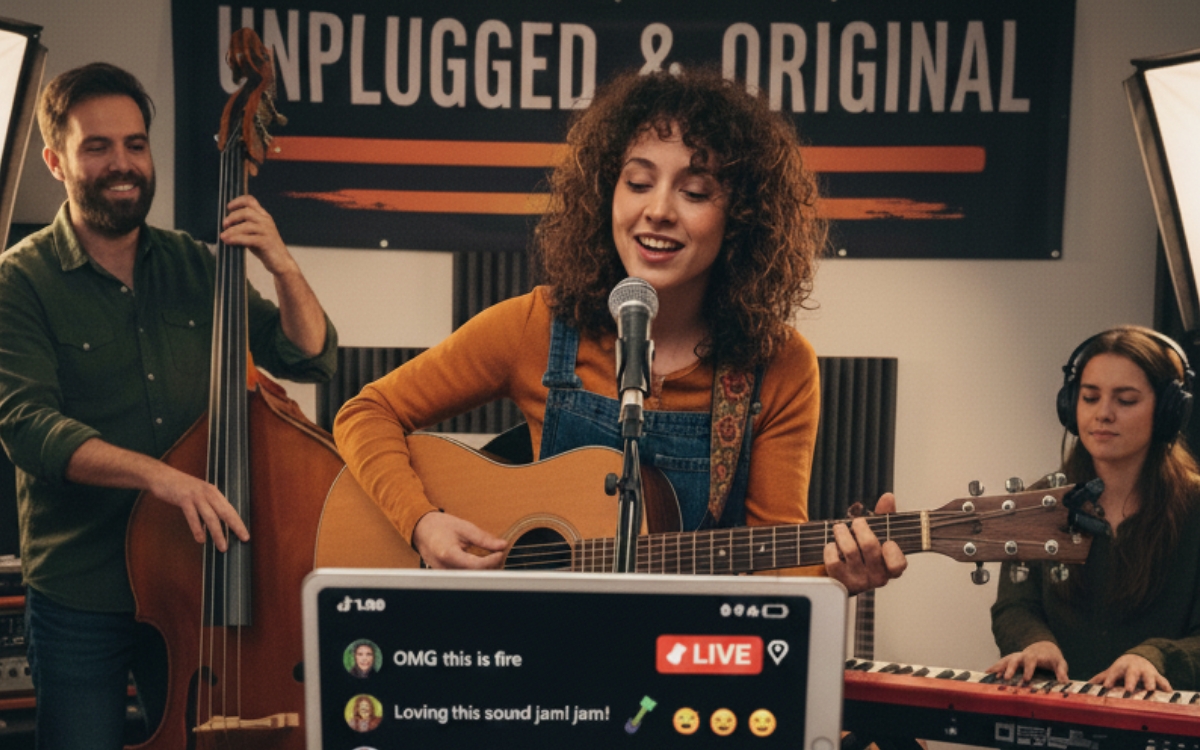How Musicians Are Building TikTok Audiences Without Following the Trends

There's a particular kind of dread that sets in when someone tells an independent musician they need to be on TikTok. The platform has become unavoidable for artists trying to reach listeners, but the conventional wisdom about what works there tends to involve dancing, lip syncing, or jumping on whatever trend is dominating feeds that week. For plenty of musicians, that approach feels impossible or just deeply uncomfortable.
The good news is that a growing number of artists are figuring out how to build genuine audiences on the platform without compromising what they're actually comfortable doing. They're not trying to go viral through choreography or participating in challenges that have nothing to do with their music. Instead, they're leaning into the parts of their creative process that already interest them.
Studio process videos are becoming one of the most reliable formats for musicians who want to show their work without performing for the camera. These aren't polished behind-the-scenes documentaries. They're casual clips of artists layering vocals, tweaking a synth sound, or explaining why they chose a specific drum pattern. The appeal is straightforward: people are curious about how songs actually get made, and watching someone work through creative decisions in real time is inherently engaging. It doesn't require charisma in the traditional influencer sense. It just requires honesty about the work.
Songwriting breakdowns follow a similar logic. Artists are filming themselves walking through how a song came together, whether that's explaining the meaning behind specific lyrics, demonstrating the chord progression on guitar, or showing the voice memo where the initial idea started. This format works because it gives listeners a way into the song that they can't get anywhere else. It's not about promoting the track. It's about offering context that makes the listening experience richer.
Music theory content is finding an unexpected audience on TikTok, particularly when artists explain concepts through their own songs. Videos breaking down why a particular chord change hits emotionally, or how a bridge builds tension, or what makes a melody memorable tend to perform well because they're educational without being academic. They're grounded in actual music that viewers can hear, which makes abstract concepts feel tangible. Artists who lean into this approach often find that they're attracting listeners who care about craft, which tends to translate into more engaged fans.
Storytelling is proving to be one of the most effective alternatives to trend-based content. Musicians are sharing the actual stories behind their songs—not in a promotional "here's my new single" way, but in a conversational style that treats viewers like they're sitting across the table. These stories might be about a specific relationship that inspired a song, a place that shaped the sound, or a personal experience that needed to be written out. The format is simple: just talking to the camera about something true. When it's done well, it doesn't feel like content creation. It feels like conversation.
What these approaches have in common is that they're rooted in what musicians are already doing. They're not asking artists to become dancers or comedians or whatever else they're not. They're just asking for a willingness to share the parts of the creative process that aren't usually visible. That might mean filming in the studio, talking through a lyric, or explaining a musical choice. None of it requires a performance in the traditional sense.
The artists finding success with these methods aren't typically seeing overnight viral moments. Their growth tends to be slower and more sustainable, built on viewers who show up because they're genuinely interested in the music and the person making it. That's a different kind of audience than the one that arrives through a dance trend, and for many musicians, it's the kind of audience they actually want.
TikTok still rewards consistency and understanding what resonates with an audience. But the idea that there's only one way to succeed on the platform—that musicians have to participate in trends that feel disconnected from their work—is becoming less true. The artists carving out their own approaches are proving that authenticity, even the quiet kind that happens in a home studio or through a simple story, can build something real.



